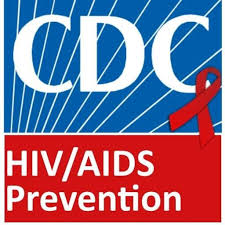
The Centers for Disease Control and Prevention (CDC) defines the goals of its HIV prevention efforts in the United States to be preventing new HIV infections, improving health outcomes for persons living with HIV, reducing HIV-related disparities and health inequities, and continually improving the effectiveness and efficacy of operations. These goals are reflected in the recently updated Strategic Plan of CDC’s Division of HIV/AIDS Prevention and align with national HIV prevention goals. To make progress in reaching these goals, the Division of HIV/AIDS Prevention works with other federal agencies and state, local, and community partners to ensure that the best prevention and treatment methods are being recommended to people living with or at risk for HIV and their providers. In September, CDC took a huge step in this regard by releasing its “Dear Colleague” announcement in which it stated there was effectively no risk of a person with HIV who has an undetectable viral load transmitting the virus to an HIV-negative partner.
The CDC announcement cited three studies involving thousands of couples and many thousands of acts of sex without a condom or pre-exposure prophylaxis (PrEP), in which there were no cases of HIV transmission from an HIV-positive partner who was virally suppressed to an HIV-negative partner. CDC stated that this means people who take antiretroviral therapy (ART) as prescribed and achieve and maintain an undetectable viral load have effectively no risk of transmitting HIV.
As the announcement was released on National Gay Men’s HIV/AIDS Awareness Day, CDC also included some information on how gay and bisexual men (and other men who have sex with men) are disproportionately affected by HIV. In 2015, more than 26,000 gay and bisexual men received an HIV diagnosis, representing two-thirds of all new diagnosis in the United States. Additionally, among gay and bisexual men living with HIV in 2015, only 61% had achieved viral suppression. This means only 61% had effectively no risk of transmitting HIV.
Following the HIV treatment announcement, CDC released a statement on October 15th in recognition of National Latinx AIDS Awareness Day discussing the impact of HIV/AIDS on Hispanic/Latino persons. In 2015, Hispanics/Latinos accounted for about 25% of all HIV diagnoses in the United States, although they made up only 18% of the total population. Among all Hispanics/Latinos living with HIV in 2014, only 58% had a suppressed viral load. This is particularly concerning given that new HIV infections among Latino gay and bisexual men rose by 20% between 2008 and 2014.
CDC encourages both public and private stakeholders to implement interventions to increase retention in HIV treatment and viral suppression, which would reduce the risk of transmitting HIV to effectively zero. These interventions must focus on disproportionately affected communities, especially gay and bisexual men of color, transgender individuals, and Black women. More must be done in order to reduce racial and ethnic disparities in HIV care outcomes.
This blog post was co-authored by Natalie Dobek, a second-year law student at Georgetown Law and a research assistant at the O’Neill Institute.



